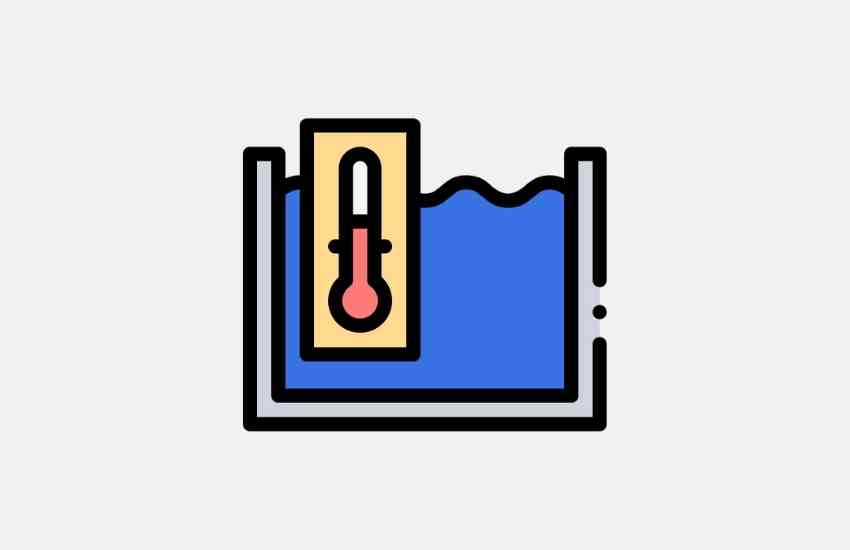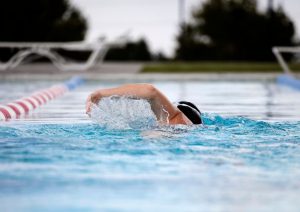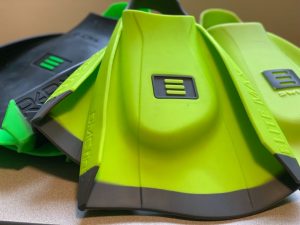
7 Best Swim Snorkels for Better Technique and Faster Swimming
Ready to throw down on a new swimmer’s snorkel? Here are reviews of the best swim snorkels for lap swimming.

Beat hot summer days, and hot pool water, with these seven proven tips for keeping your swim pool nice and cool this summer.
The backyard pool is often where we go to cool off on a hot summer day.
But there are times when even the pool needs to cool off.
Warm water can be a real buzzkill when it comes to cooling off (and excessively hot pool water promotes bacteria and algae growth and can be unsafe for some swimmers).
Fortunately, there are lots of ways to keep the cool going all summer going.
Let’s take a look.
There’s a lot of debate when it comes to the “best” way to cool down a pool.
Even more so if you’re looking to cool it down pronto.
Fortunately, there are a lot of different ways to bake this cookie, which means in this list you will find at least a couple of options that will work for you.
Here are my proven methods for cranking up the chill factor:
This method may seem like the most common-sense option, as you can simply drain the warm water and fill it with fresh, cool water.
This is absolutely a great way of cooling down a pool quickly, though you will be using up a lot more water.
If you don’t want to waste as much, you can also just do a partial drain and refill, depending on how warm the pool is and your water source.
Keep in mind that if you do either, you’ll have to rebalance your pool chemistry as well, which can be tedious, so there’s that.
This is another one of those common-sense options to cool a pool.
However, this may not work for every situation.
If you live in an incredibly muggy, hot area, shade may not make a big difference in cooling the water down.
However, if it’s under very direct sunlight, you’ll likely see a big difference.
You could plant some trees around the pool, or use some larger pool umbrellas to do so.
Make sure if you choose to plant trees for shade, that you don’t do so too close to the pool.
Over time, the roots can grow up and compromise the pool’s structural integrity.
Umbrellas are great, because you don’t really have to worry about dry leaves, twigs, and other debris falling into the pool like you do with trees. And you can also tuck them away once pool season wraps up.
Just about everyone appreciates a well-shaded, refreshing pool area on a smoldering, sunny day.
Shade sails and pergolas are also nice options that not only help keep the pool cool, but also add to the appearance of any backyard.
Not only one of the most effective, but also one of the most visually-appealing options for staying cool is adding a pool fountain or other water feature.
Even better, it’s one of the most affordable methods!
You may notice that pools are often hot, as the water is just…sitting there.
Moving water, on the other hand, is typically much cooler.
This is because moving water promotes evaporation, and when a liquid evaporates, it loses heat in the process of converting to a gas.
What’s cool about using a pool fountain is that you don’t have to keep it running all the time.
Operating the water feature at night is the right move, as the air temperature is going to be cooler than in the daytime.
You can of course use it during the day as well, it’s just not going to be as effective as nighttime use.
While many pools already come equipped with a fountain, waterfall, or jets, but if yours doesn’t, that’s okay.
There are tons of great aftermarket pool fountains available that you’ll benefit from adding.
If you don’t have any built-in water features, you could even try a solar-powered floating fountain!
These are quite an affordable alternative for many, and operate by floating around the pool, sucking up water, and shooting it back out as a fountain.
Not to mention, they look pretty cool, too!
These pumps are incredibly handy to have, as they can either heat or cool pool water!
All you have to do is flip a switch and the temperature will start working in your favor.
They work by extracting heat from your pool water and can cool pool water quickly.
See also: 5 Best Heaters for Above Ground Swimming Pools
That said, they are relatively expensive and use a good amount of power in order to operate.
If your pool regularly gets quite warm and cold, however, it may be worth it.
Just make sure to find yourself a high-quality pool heating pump that has the reverse feature, and it’ll be good as a long-term cooling solution.
If you don’t think you’ll need the pool heating feature, then you can save quite a bit of cash by looking into a pool chiller, instead.
These are very easy to use and maintain, and are affordable for many.
How these work, is by using fans to cool the water as it travels through the chilling system.
While results obviously depend greatly on the size of your pool, you can typically expect it to cool in just a few hours!
Not to be confused with pool chillers, pool coolers are also very simple to use.
These insert into the pool’s return jet/s and mist that water back into your pool.
This is such a nice way to cool down, and can even lower the pool water temperature by up to 10 degrees!
As they can be left in while the pool is in use, it only adds an extra layer of fun and comfort to splashing around!
If you don’t consider yourself a particularly “handy” person, then this is also a great option due to how easy they are to install and maintain.
Do you use solar panels or domes for heating?
If so, then you can actually just run that pool pump at night, keeping water running through them.
By using them at night, they’ll operate essentially in the reverse than they would in the daytime.
With water traveling through them, they work as a pool cooler similar to of how a refrigerator works to keep your drinks nice and crispy.
Of course, the amount of ice does vary, depending on weather conditions and the size of your pool.
However, you could expect to use anywhere from around 8,750 to 11,000 pounds of ice just to cool it down.
That would add over 1,000 gallons of water, which is not only a bit wasteful, but is really only a temporary solution.
If you’re regularly dealing with a warm pool, it’s not going to be a feasible solution for cooling in the long run.
Needless to say, this is not the most popular method of pool cooling, but it does work if you need to cool it down quickly one time.
Once you get to over 84 degrees Fahrenheit or hotter, you’re making your pool more susceptible to bacteria and algae growth.
For Olympic swimming events, the pool isn’t allowed to be above 82 degrees Fahrenheit.
While public pools typically keep theirs up to 84 degrees Fahrenheit, this actually isn’t the “healthiest” temperature for humans to swim in for that reason.
Ideally, your pool will be around 78 to 80 degrees.
However, there are some people who really like warmer water, even up to around 90 degrees!
When you get lower than 78, it can feel quite cold and uncomfortable, and no one wants that!
The quickest way is to have cool air blowing over the surface of the water, which will literally blow the heat off the water.
You can also get that water moving, by the use of pool fountains, waterfalls, jets, or other water features.
All of the methods mentioned earlier in the article can be helpful, but each has its own pros and cons (and costs!).
Now that you’re practically an expert in cooling down pools, which method will you be using?
Everyone has different needs, as every pool, climate, and situation is different.
However, there really is something to suit everybody, every budget, and preference.
Now get out there, and go enjoy that cool water!
7 Best Solar Swimming Pool Covers. A solar pool cover saves energy, keeps your pool clean, and regulates the temperature of the water. Here is a breakdown of our favorite solar swim pool covers.
Subscribe to the YourSwimLog.com newsletter and get tips and advice on how to swim faster every weekday morning, straight to your inbox.
Join 33,000+ swimmers, coaches, and swim parents learning what it takes to swim like a boss.
Unsubscribe anytime. Email will never be shared or sold.

Olivier Poirier-Leroy Olivier Poirier-Leroy is the founder of YourSwimLog.com. He is an author, former national level swimmer, two-time Olympic Trials qualifier, and swim coach.

Ready to throw down on a new swimmer’s snorkel? Here are reviews of the best swim snorkels for lap swimming.

Looking to get some new swim gear on a budget? Shop the best Black Friday deals for swimmers in this exclusive guide.

Looking for the best swimming app to maximize your time and effort in the water? Here’s a look at the top swim apps for conquering your swim workouts.

Wondering how often you should be testing the water in your pool or spa? Here’s a detailed look at how frequently you should test your pool. Your swimming pool and spa relies on being properly balanced to keep the water clean and safe for swimming. As a pool owner, you

Fed up with the effects and smell of chlorine in your hair after swimming? Here is how to remove chlorine from your hair once and for all.

The DMC Elite fins are high-performance training fins for competitive swimmers. Here’s a review of why these fins are flat-out awesome.

LANE 6 PUBLISHING © 2012-2024 · PRIVACY POLICY · RETURN POLICY · TERMS OF SERVICE · AFFILIATE DISCLOSURE